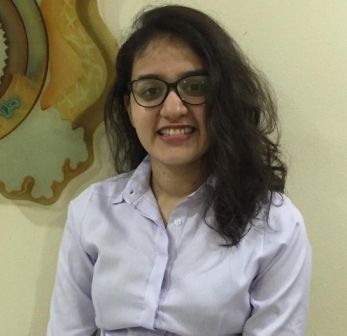Financial savings is often a topic of public discussion and deliberation. According to the Reserve Bank of India, savings by Indian households in the first quarter of FY 2020-21 increased to 21.4 percent of GDP from 10 percent of GDP in the previous quarter. This increase in savings could possibly be because of a forced reduction in consumption expenditure due to the COVID-19 pandemic. Among other reasons, a steady decline in financial liabilities—which are currently at 0.3 percent of GDP as of the first quarter of FY 2020-21—could also be a factor. These savings are mainly composed of deposits in bank accounts, which have increased since the introduction of government schemes such as the Pradhan Mantri Jan Dhan Yojana (PMJDY), which was announced in 2014.
As per official numbers, this scheme is making strides towards success. Zero balance accounts have reduced from 25-30 percent to 13.5 percent and dormant accounts have reduced from more than 20 percent to 17 percent in the last five years. According to data from Financial Inclusion Insights, as of 2018—nearly five years post the launch of PMJDY—79 percent people are registered for bank accounts but only 55 percent are actively using it. Literature on saving in formal institutions points towards a similar gap between take-up of bank accounts and active usage. (Here, take-up refers to registering for a bank account and active usage refers to savings and transactions made through the account). While PMJDY has features such as overdraft facility, insurance cover, and the linked RuPay Debit card, there are no features to promote savings. Much like the discussion on financial inclusion, which is mostly skewed towards access to credit and uptake of loans, the discussion around savings, while being important, is often overlooked.
Additionally, an assumption often made about the poor with respect to savings is that they do not or cannot save. This is a misconception. They save; however, they may do so through informal methods—such as chit funds—which often have high risks and high costs. There are three main downsides to saving through these mechanisms:
- Trust: To be able to save through informal mechanisms, one would have to find people they can trust, which may not be easy for people who have to move around for work.
- Accessibility: Not everyone is allowed to be part of these groups, thus they are not widely accessible.
- Security: Money is usually held with one person and the key is with another, thus this may not be the safest way to save a big sum of money.
Only 22 percent of adults worldwide report having saved at a formal financial institution. According to the Global Findex Database, 77 percent of adults living on less than USD 2 a day report not having an account at a formal financial institution. Thus, there seems to be an unresolved puzzle around formal financial instruments such as bank accounts. Research by economists Pascaline Dupas and James Robinson in Kenya found that even after waiving fees for opening a savings account—a feature similar to the no-frills PMJDY accounts—only 18 percent of participants actively ended up using it. They found that three factors affected savings. People did not save if:
- They lacked trust in the bank
- Service was unreliable
- Withdrawal fees were prohibitively expensive
So even though accessibility is the first step towards increasing formal savings, it has to go hand-in-hand with the quality of the products being offered. Researchers, nonprofits, and governments have tested several other interventions to increase savings. These interventions, among others, are commitment savings devices, text message reminders, financial education programmes, and default saving contributions. Here, we will discuss three of these interventions which can be beneficial in the Indian context.

1. Commitment savings
In a study conducted by Harvard economist Nava Ashraf and colleagues in the Philippines, participants were given a Save, Earn, Enjoy Deposits (SEED) account as a commitment savings device. They could not withdraw money from the account until a date goal or amount goal, as chosen by the participant, was attained. Participants were also given a lockbox whose key was with the bank. The monthly savings from the lockbox could later be deposited in the bank. Though a weak form of commitment, the authors think that the lockbox served as a mental account and helped keep loose cash out of the hands of participants, helping them save more. A commitment savings intervention could be beneficial in the informal savings landscape in India, as people already use a box or store money under mats to save it. These occasional savings could be further tied to bank deposits, bringing them into the formal banking system.
2. Default savings
Another intervention that has mainly been used and tested in low-income countries is the role of cash transfers and defaults in saving. The default here is the probability of one choosing or staying with an option because it was pre-decided. In a study by Lasse Brune and colleagues in Malawi, participants received USD 60 at once as part of the experiment. This money was either given to them in cash or deposited directly in their bank accounts. Researchers believe that depositing the money in the bank signals that the money is intended to be saved, causing participants to treat the money differently. Direct deposits led to 2.8 times more savings a week later. In India, while cash payments are the easiest and most convenient way to pay workers with low incomes, if a part of their payment could be deposited in the bank it could promote savings. This would have to be preceded with educating workers about the banking system through easy-to-understand and targeted awareness campaigns.
3. Group savings
Group savings or peers also have a big impact on if and how much an individual is saving. In a study from Chile, micro-entrepreneurs were randomly assigned to announce their savings goal in group meetings. The ones who stuck to their goal were rewarded with stickers. In a subsequent intervention, the group savings feature was retained through feedback messages. These messages informed the participants about members’ savings without the physical meetings. The authors found this to be equally effective. Thus, peer influence was seen to impact savings with or without physical meetings.
Poverty and its consequences are layered, thus, even solutions to tackle the same cannot have a ‘one size fits all’ approach.
Harvard and Stanford economists, Emily Breza and Arun Chandrashekhar found that, having a savings monitor—someone you share your savings goals with and who keeps a check on how much of it you have achieved—also affected savings. The social reputation of the monitor ie. how well-known and influential they were, affected the goal achievement of the saver. The higher the social reputation, the higher the likeliness of savers meeting their goal. The researchers believe that the motivations to save are that the monitors will talk about the savers, that saving higher would lead to more responsibility and better jobs in the village. Such an intervention would be beneficial and plausible in India especially at the village-level, where panchayats (a village-level governing body) already exist. Elected representatives, as well as functionaries at the local level, could serve as effective monitors. Alternatively, research suggests that key members of village-level social networks can be tapped to help with information dissemination as well as monitoring.
One key insight from existing interventions and literature to increase financial savings among the poor is that context matters. If, hypothetically, the cause of low savings is no disposable income, then implementing a commitment savings intervention in this setting would not prove very beneficial. Poverty and its consequences are layered, thus, even solutions to tackle the same cannot have a ‘one size fits all’ approach.
Savings are beneficial as they can provide a buffer against economic shocks such as the current COVID-19 pandemic and reduce reliance on costly and sometimes risky short-term credit.
While informal mechanisms of savings such as chit funds exist, these may not be ideal. Instead, self-help groups can be used to spread awareness about and enable formal savings. Various small-scale interventions, like the ones described above, can be combined to make a watertight approach. For instance, in a study conducted by the Institute of Money, Technology and Financial Inclusion in India, informal savings doubled when women were given context-specific financial education through local self-help groups and a lockbox to deposit their savings. Savings, especially formal savings, are beneficial as they can provide a buffer against economic shocks such as the current COVID-19 pandemic and reduce reliance on costly and sometimes risky short-term credit. It allows people to save without many of the risks of informal savings and makes them eligible for products such as loans and insurance. It is important to prioritise steps to increase savings.
The author would like to thank Anchal Khandelwal, Anirudh Tagat, and Vedika Inamdar at Monk Prayogshala for their inputs.
—





